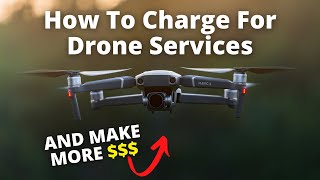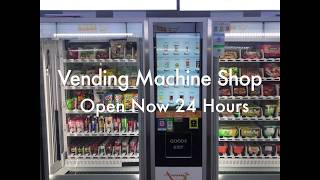Smart regions are places where technologies like IoT, Big Data, Internet of Things (IoT), Machine Learning and Artificial Intelligence (AI) can have a positive impact on their economy and culture. These are places that are digitally sophisticated, and have access to high-speed data networks, advanced computing and large amounts of cheap or free data. With the increasing digitization of the world economy, many countries have become smart regions with well-developed information technology infrastructures. These countries already have the necessary resources and institutions in place to support a tech-savvy society. For example: In some parts of the world, there are already Smart Cities with pre-existing infrastructure related to telecommunication, utilities, housing and transport. This article lists 10 smart regions in the World according to these criteria.
Telecommunication
Telecommunication plays a central role in every modern economy and society. It enables the exchange of information and value, and provides the infrastructure necessary for the transmission of voice and data. It is also a key factor in the movement of people and goods, and information. The Internet of Things (IoT) and the digital transformation of everyday life are increasing the demand for telecommunication. In some regions, the penetration of fiber-optic cables is much higher than in other parts of the world. This is mainly due to the high population density in some parts of the world and the need for high-speed Internet. This can be a problem for smaller countries with limited fiber-optic capacity. In some parts of the world, the penetration of DSL is much higher than in other parts of the world. This is mainly due to the low population density in some parts of the world and the need for high-speed DSL. In some parts of the world, the dominance of cable TV is significant. Mainly due to the high population density in some parts of the world and the need for high-speed TV.
Big Data
Big Data is the observation and collection of large amounts of data in a systematic and expert way. This can be achieved through such tools as Data Mining, Analytics and Machine Learning. The Internet of Things (IoT), Big Data, and Machine Learning are increasing the demand for telecommunication and Data Analytics. The Internet of Things (IoT) and the digital transformation of everyday life are increasing the demand for telecommunication. In some regions, the penetration of fiber-optic cables is much higher than in other parts of the world. This is mainly due to the high population density in some parts of the world and the need for high-speed Internet. This can be a problem for smaller countries with limited fiber-optic capacity. In some parts of the world, the dominance of DSL is significant. Mainly due to the low population density in some parts of the world and the need for high-speed DSL.
Internet of Things (IoT)
The Internet of Things (IoT) is a network of everyday objects that are connected to the outside world through electronic sensors and electronic devices. The Internet of Things (IoT) is a concept that was first proposed in the 1980s. IoT is a catch-all term that covers a wide range of technology that uses the Internet. It can also be described as a network of devices that are connected to each other via sensors, software, or both. The concept of the IoT was already well established in the 1980s. However, the adoption of technology was limited because the number of connected devices was relatively low, and the data they were able to process was limited. In the 1990s, digital technology was able to make possible the processing power necessary to support the huge amount of data necessary for real-time analysis. The first well-known application of IoT was in home automation. It allowed people to connect their devices to their home network with Internet connection. These connected devices can be controlled by a smartphone app. Today, IoT is used to connect cars, buildings, factories, etc. to the Internet with a network connection. This allows the devices to exchange data, such as Parking Information, Road Conditions, etc.
Machine Learning and Artificial Intelligence
Machine Learning is the study of automated decision making. It is a branch of Computer Science that uses computers to perform tasks that were previously done by humans, such as recognize faces or play music based on a user’s preferences. One of the most popular use cases for Machine Learning is in AI. AI is the processing of large amounts of data to make inferences and conclusions. One of the most popular use cases for AI is in Business. Predictive analysis allows businesses to make informed decisions based on historical data, such as which products to buy, when, where and how. There are many different types of AI, but they all have different goals. For example, one type of AI could be used for Business Intelligence, where the goal is to display data about the past and future sales of a company’s products. Another type of AI could be used for Predictive Maintenance, where the goal is to optimize the operational performance of a company’s assets. Machine Learning and Artificial Intelligence are used in many different fields, including Predictive Maintenance, Cybersecurity (AI-based Predictive Protection Against Cyber Threats), Healthcare (AI-BASED Medical Diagnostics), and Retail (Multi- Retail Shopping Carts).
Culture and Identity
Culture is the way people think and how society as a whole communicates with each other. Culture is an important factor in how a region identifies with others. It can affect people’s perceptions of other regions and make one area seem less favorable than another. For example, people in the United States are generally proud of their history and heritage, and they are willing to defend their country. This can make people in other regions feel unwelcome, less valued, and even unloved. On the other hand, people in some parts of the world tend to be very religious. They often see the Bible as a book of rules, and they are sensitive to its authority. This can cause people in other regions to feel very threatened by the “other”.
Summary
The Internet of Things, Big Data, and Machine Learning are changing the way we consume content, acquire information, and create products. With the Internet of Things, everything is connected. From your computer to your TV, your car, your thermostat, and even your toothbrush, everything is connected to the internet. With Big Data and Machine Learning, companies and organizations are able to create content, distribute products, and predict customer behavior based on past purchases, location, and other factors. With the increasing digitization of the world economy, many countries have become smart regions with well-developed information technology infrastructures. These countries already have the necessary resources and institutions in place to support a tech-savvy society.




